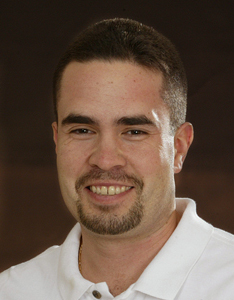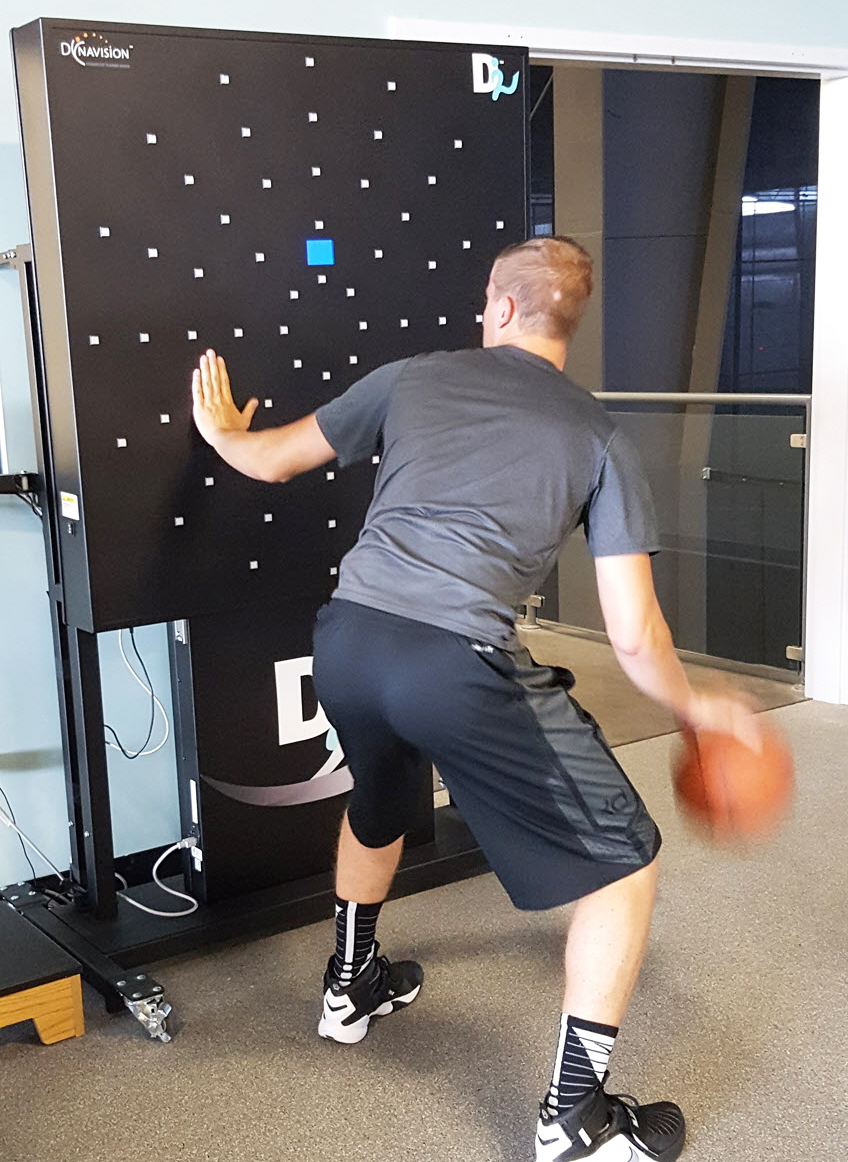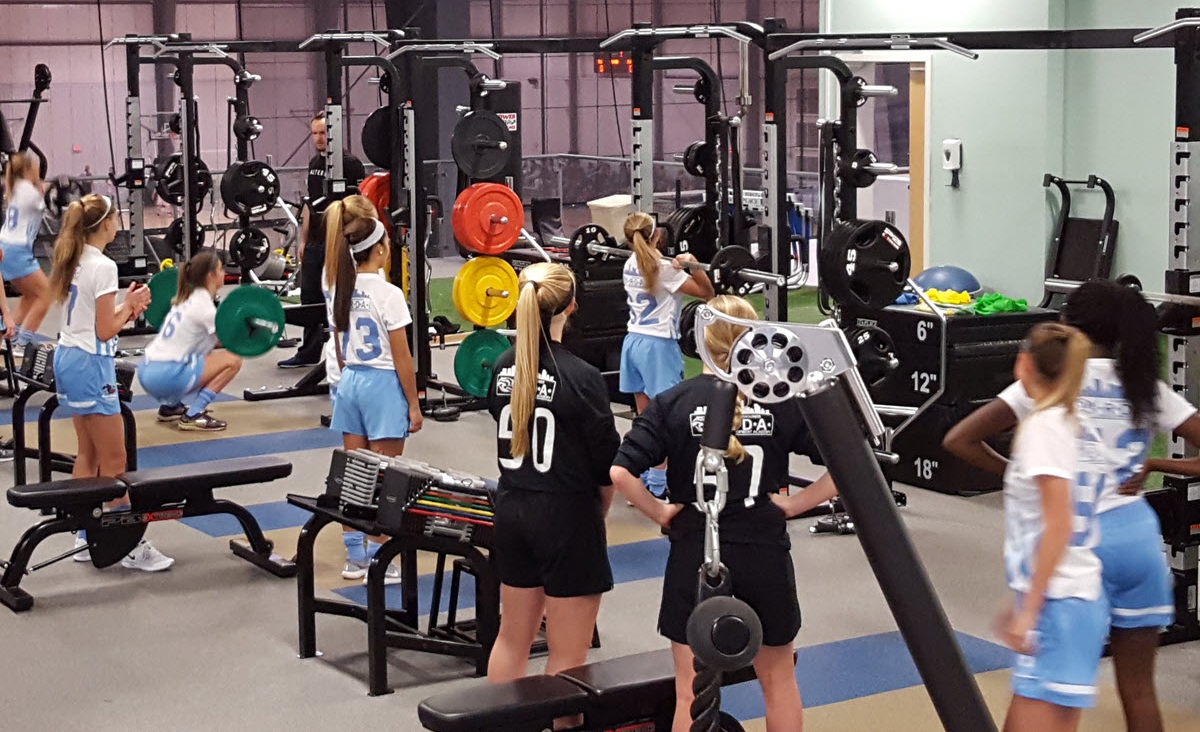
Frank Velasquez, Jr., ATC, CSCS, and Director of AHN Sports Performance.
In 2015, Allegheny Health Network (AHN) recruited Frank Velasquez, Jr., certified athletic trainer (ATC) and strength and conditioning specialist (CSCS), to become Director of AHN Sports Performance. The program has grown rapidly, expanding from its initial home at the Cool Springs Sports Complex in Pittsburgh’s South Hills, to a second Sports Performance and Physical Therapy Center in Wexford, north of the city, with another sports health complex on its way in Coraopolis, west of the city.
Velasquez says people shouldn’t think “sports performance” means the program is only for athletes though.
“Sometimes we use the term ‘high performance’ instead, because everyone is a performer in some way, shape, or form,” he explains. “The people who come through our doors typically have the same goal: do what they do, but do it better, or without pain. We work with everyone from regular active people to corporate folks to athletes at all levels.”
During our interview it was clear that Velasquez is a “people person” — dedicated to his craft, but even more so to each individual that he can help through the Sports Performance program.
Emily Adamek (EA): You’re from Bay City, Michigan originally but moved to Pittsburgh to work with the Pirates and have been here ever since. What is your favorite part about this city?
Frank Velasquez (FV): The people. Both of my sons were born here, so it’s home now. But there are a lot of similarities between Pittsburgh and Michigan. There it was the auto industry, here it was steel. Both places love their sports, and both have a lot of different cultures, nationalities, and ethnicities. There are more hills here — but that’s good for training.
EA: Tell me about the professional journey that brought you to the AHN Sports Performance program.
FV: I started out as a minor league baseball athletic trainer, which is more on the medical side of things. After four years, I transitioned into strength and conditioning, and that’s how I ended up in the big leagues as a strength coach.
I spent seven years with the Texas Rangers and nine years with the Pittsburgh Pirates. The doctors I worked with from AHN had plans of starting a sports performance facility someday, but they weren’t in the position to do it yet when I left the Pirates, so I started my own business. My vision, then and now, was to have a program for everyone living an active lifestyle. I have been to different cities and have seen some of the top training centers, but they tend to be specifically for the elite athlete.
I had my business for four years, we ended up having two facilities — and then the chair of orthopaedics at AHN, Patrick DeMeo, a good friend of mine, approached me and said they were ready to create the kind of sports performance facility that had been described years earlier.
EA: Working in professional baseball for as long as you did, do you think you picked up skills that someone working in a different sport might not have?
FV: Sure, for example, shoulders and elbows — I can take them apart and put them back together. It was my dream for so long to get to professional baseball, and I did, but I feel like I wasn’t always utilizing my entire tool box of skills. It has been a pleasure to get the opportunity to now work with people in ballet, BMX, soccer, lacrosse, field hockey, football, etc. — all these different types of activity.

Both the Cool Springs and Wexford locations have DynaVision — a system to train visual and sensory motor skill integration that is used by top athletes throughout the world.
EA: Is there a typical Sports Performance customer?
FV: The clientele is diverse, but mostly we see active adults and athletes of all levels and ages — middle school, high school, college, and professional athletes. We’re under the sports orthopaedics umbrella of AHN, so doctors also send us their postoperative athletes and active adults to make sure that rehab and recovery from surgery is taken care of correctly.
EA: What services do you provide?
FV: Physical therapy, along with a host of services to improve strength, speed and agility, and recovery, which is our newest offering and very popular. Our AHN high school athletic trainers love the recovery services because they help to reduce the volume of aches, pains, and injuries with their student athletes and help them bounce back faster. We like to preach that our programs and methodology help reduce the risk of injury and enhance performance — in that order.
There are three areas of difference in terms of what our program offers. First is equipment — including anti-gravity treadmill, cryosauna chamber, the DynaVision visuo-motor system, air compression recovery boots, vibration therapy machines, and 15 yards of turf at both our Cool Springs and Wexford locations.
The second difference is our level of expertise and experience. When I started, it was just me, but now we have a high-performance team of more than a dozen people, including physical therapists, strength coaches, recovery specialists and department secretaries. We hire people with different backgrounds and skill sets — the last thing we want is for them to be the same. We want them each to bring something different to the table.
And then a third difference is how we approach our clients. It’s not always push and pull and make you throw up. Sometimes the focus may be we need to help you recover. It’s very individualized — sports specific, position specific, person specific.
EA: For a first-time client, what can they expect when they come see you?
FV: If you come in through physical therapy, we will give you an evaluation, treat you medically, and help you integrate with our strength team. Once you get discharged from physical therapy you can go into the “transition” program — we have a program where you get to stay with us for a lesser cost for at least one month so you can continue the good work. After that, if you want to stay, you would enter into one of our normal strength training packages.
If you come to us healthy, we start with a kinetic chain assessment, an evaluation to figure out what we’re dealing with — see where you’re tight, loose, weak, strong. We’re going to check everything for inefficiencies — the shoulder-scapula, core, low-back, hips, knees, ankles. And then, let’s say you’re a runner and you want to come in twice a week. We would then customize a program based off all of that information. At any given time, all of the people in our facility are following their own unique program.
Another advantage here is we’re a one-stop shop. Normally, you would have your physical therapist, strength coach, and massage therapist, and none of them are in the same place or necessarily communicating with each other. Here, we’re all on the same page. That results in better quality of care, people getting better faster, and it also saves you time and gas money because we’re all in one place.
EA: How important is it to build a personal relationship with clients?
FV: Very important. That was something interesting about the shift from running my own business to working within AHN. The fear when you join a bigger organization is that you might lose that personal touch, but we’ve been able to keep the same intimacy we had as a small business. People know your name here. Clients have our cell-phone numbers. They text and call when they need us. It’s more of a personalized, intimate, small-town feel. We go above and beyond the call of duty — to me, that’s “the AHN way.”
At some places, quality gets sacrificed for quantity — the focus turns to how many people you can fit in, how much you can bill. That’s the last thing we want here. We make sure to keep up the quality of the experience as we grow, and provide our clients with the “hands on” care that they need and deserve.

The Sports Performance program’s TEAM Training package allows whole teams to do strength training and conditioning sessions at Cool Springs (pictured above) or Wexford.
EA: Do you think that as a society we place enough emphasis on the value of movement?
FV: I think as a society we are very busy, and one of the things that falls through the cracks is our own health — getting in a run or workout, meditating, or just taking a break. It’s mostly work, work, work. And if you have kids, you’re taking care of them. If it’s not being scheduled, it’s not getting done.
We’re also a very sedentary society. There are a lot more jobs now than there used to be that involve sitting at a desk. So we move from one seat to the next — work, driving, eating dinner, watching TV. We have to make an extra effort to get up and move.
And for kids, it’s important to let them just get out and play at the playgrounds. It doesn’t all have to be organized play. As adults, it’d be nice if we could just go out and play, but it takes a little more effort than that, and I think “play” is becoming a lost art.
EA: What do you say to people who might be nervous about diving back into physical activity after they’ve been sick, injured, or inactive?
FV: Rule number one — find something you want to do, whether that be to climb Camelback Mountain in Arizona, run your first 5k, or just walk around your neighborhood. You need a goal first. Then, I would say go visit your PCP and get a physical, so that you know you are ready to then reach out to a strength and conditioning specialist or a high-performance team that can help you achieve your goal, and set smaller goals to attain on your way. Especially for people who have concerns, coming to us means we can train you in a monitored, managed environment, which helps reduce risk.
EA: What motivates you to come to work each day?
FV: The people — and the opportunity to be a difference maker.